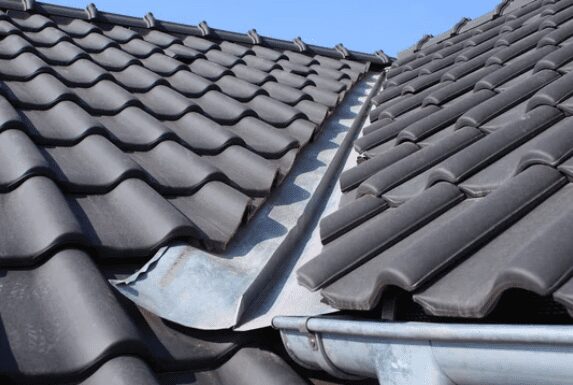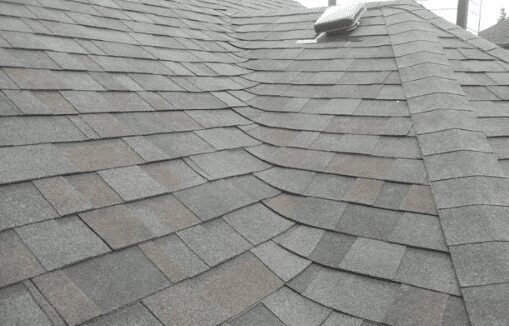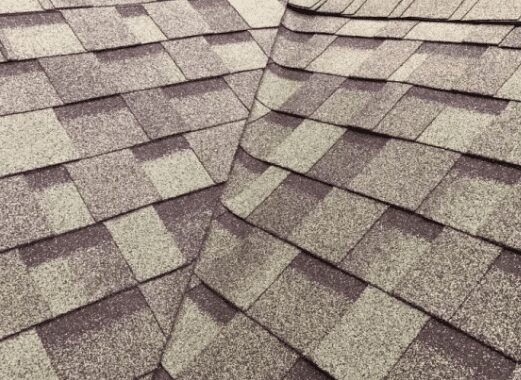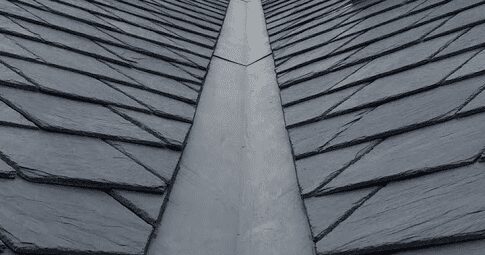
One crucial aspect of roofing that requires careful consideration is the design and construction of the roofing valley. The valley on a roof is formed when two slopes meet, forming a trough-like structure that directs water away from the roof.
Choosing the right type of roof valley is crucial for ensuring the longevity and effectiveness of your roof. This article will explore different shingle roof valley types and discuss their benefits and drawbacks, helping you decide on your roofing needs.
Woven Roof Valley

The woven roof valley is a traditional and time-tested method for creating a durable, watertight roof valley. It involves layering shingles from both adjacent roof slopes in an alternating pattern, overlapping each other to create a woven effect.
This technique provides excellent protection against water penetration and is often preferred for its aesthetic appeal. However, it requires skilled craftsmanship and meticulous installation to ensure its effectiveness.
Closed-Cut Roof Valley

The closed-cut roof valley is a more modern approach to roof valley construction. In this method, the shingles from one roof slope are trimmed back, creating a clean and streamlined valley.
The shingles from the adjacent slope are laid over the trimmed shingles, covering the cut edges and providing a seamless appearance. This type of valley offers a sleek and contemporary look but may not be as resilient against heavy rainfall or extreme weather conditions.
California Roof Valley

The California roof valley, or the Long Island Valley, is a variation of the closed-cut Valley. It is characterized by metal flashing along the valley area to provide additional protection against water intrusion.
The metal flashing is typically made of copper or galvanized steel and is installed underneath the shingles. This valley type offers enhanced durability and can withstand heavy rain and snow.
However, it requires proper installation and periodic maintenance to prevent corrosion or damage to the flashing.
Open Roof Valley (With Metal Lining)

The open roof valley is a design that incorporates a visible metal lining along the valley area. It is commonly used in contemporary architectural styles where the metal lining adds a decorative element to the roof’s design.
The metal lining, usually made of copper or aluminum, provides excellent water-shedding capabilities and prevents debris accumulation in the valley. However, the open nature of this valley type may make it more susceptible to clogging if not regularly maintained.
Considering the various roof valley options, the choice depends on the climate, architectural style, and personal preference. Due to their superior water-shedding capabilities, a California roof valley or an open valley with a metal lining may be recommended for areas prone to heavy rainfall or snow.
However, the woven or closed-cut valley can be a suitable option in areas with milder climates or where aesthetics play a significant role.
Regardless of the chosen roof valley type, ensuring its regular maintenance and repair is crucial. Over time, valleys can be subjected to wear and tear, leading to leaks and water damage.
Signs that indicate the need for valley repair include:
- Cracked or missing shingles.
- Water stains on the ceiling.
- Visible signs of deterioration in the flashing.
Timely repairs and maintenance can prevent further damage to the roof structure and extend its lifespan.
The most commonly used roof valley flashing materials options include copper, aluminum, and galvanized steel. Copper flashing is highly durable and offers excellent corrosion resistance, contributing to its popularity.
Aluminum flashing is lightweight and cost-effective, suitable for various roofing applications. Galvanized steel flashing provides adequate protection at a lower cost but is susceptible to rust over time.
The roof valley flashing profile is another crucial consideration. The flashing should be sized and shaped to fit the roof’s contours and ensure a tight seal.
Joint flashing profiles include V-shaped, W-shaped, and straight profiles. The choice of profile depends on the specific roof design and the desired aesthetic appearance.
Regular inspections and maintenance are essential to keep your roof valley in good condition. Clearing debris from the valley, such as leaves or branches, is essential to prevent clogging and water backup.
Inspecting the valley for signs of damage, such as loose or damaged shingles, and promptly addressing them will help maintain the integrity of the valley.
Additionally, ensuring proper attic ventilation and insulation can minimize moisture buildup and the possibility of ice dams forming in the valleys during winter.
Conclusion
In conclusion, the importance of roofing valleys in a home’s roofing system cannot be overstated. They serve as crucial junctions where roof planes meet, guiding water down to the gutters and preventing a roof leak.
As homeowners, we must understand the differences between open and closed valley roofs, offering unique functionality.
Closed valley roofing, often favored for its streamlined appearance, involves asphalt shingles overlapping across the valley, while open valley involves a visible valley lining on the roof deck.
While asphalt is a popular roofing material for both methods, the decision should be informed by the local climate, the home’s architectural style, and the homeowner’s budget.
The underlayment, a vital part of the roofing system, ensures additional protection against leaks. Engaging a professional roofing contractor or roofer is highly recommended, as their expertise guarantees proper installation, leading to a longer-lasting new roof.
Lastly, always check the warranty details to understand what is covered. In keeping with the saying, a stitch in time saves nine,’ a well-installed closed or open valley roof can save a homeowner significant future expenses and headaches.
Fundamental Role
In summary, roofing valleys play a fundamental role in a home’s roof system, managing runoff by directing the most water flow towards the gutters. The two primary types of roof valleys are open and closed, each with unique advantages and disadvantages.
The closed roof valley system, particularly, merges seamlessly with the rest of the roof, giving a straight line and uniform appearance. It often utilizes roofing shingles, including asphalt ones, overlaid along the valley, minimizing granule loss caused by elements like acid rain.
Conversely, open valleys utilize a sheet of metal, typically stainless steel, exposed between the rest of the roofing shingles, providing robust durability, especially in cooler climates.
However, roof valley installation is a complex process requiring the skills of a professional roofer. One integral part of this process is applying a lining layer, such as a self-adhering underlayment or water shield, before laying the roofing shingles.
This ensures added protection and functionality, making it the best choice for many homeowners despite the relative ease of installation for other valleys.
In addition, considering valleys’ significant role in drainage, understanding their application in different circumstances, like the closed valley application, can make a huge difference in the roof’s longevity and performance.
Should you have any doubts or questions about what roofing system and valley type would be the best way for your home, reaching out to a roofing contractor through a contact form could be an excellent step toward making an informed decision.
Remember, while the rest of the roof is vital, the valleys handle the critical task of managing runoff, so their proper design and installation are paramount.






















